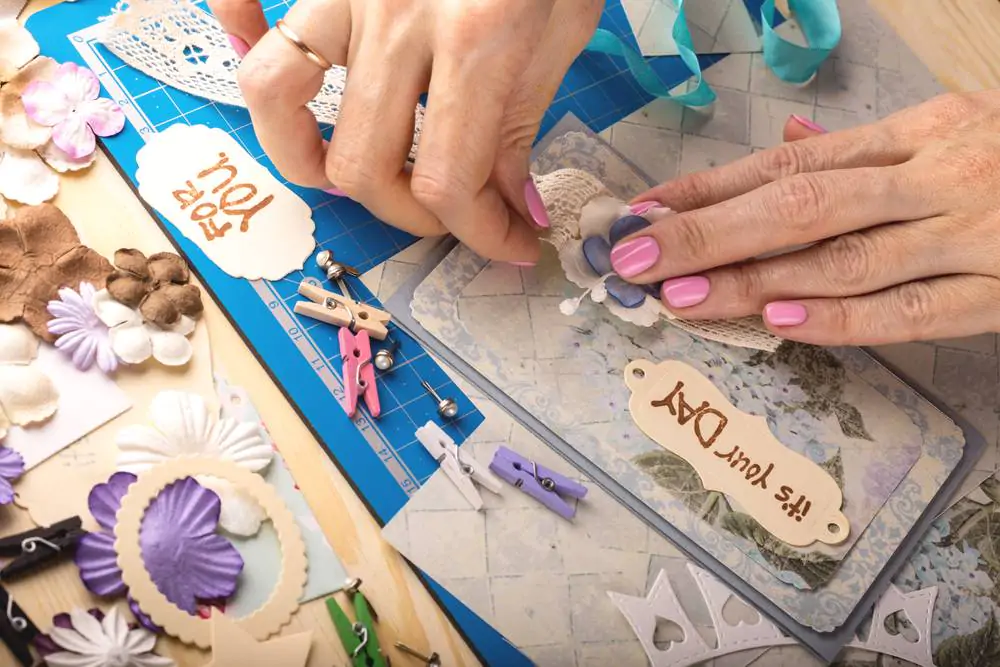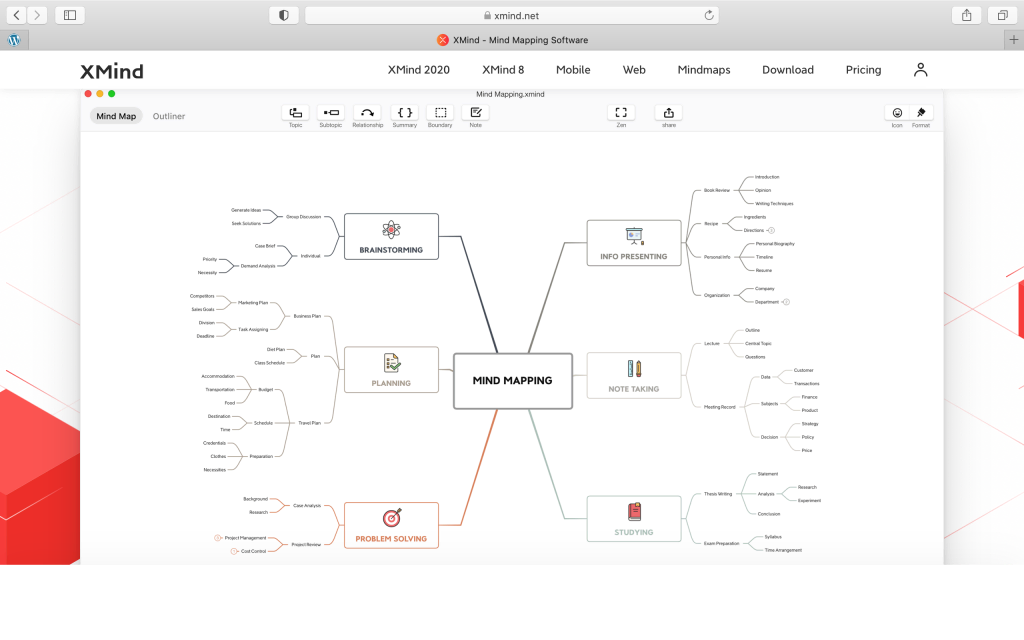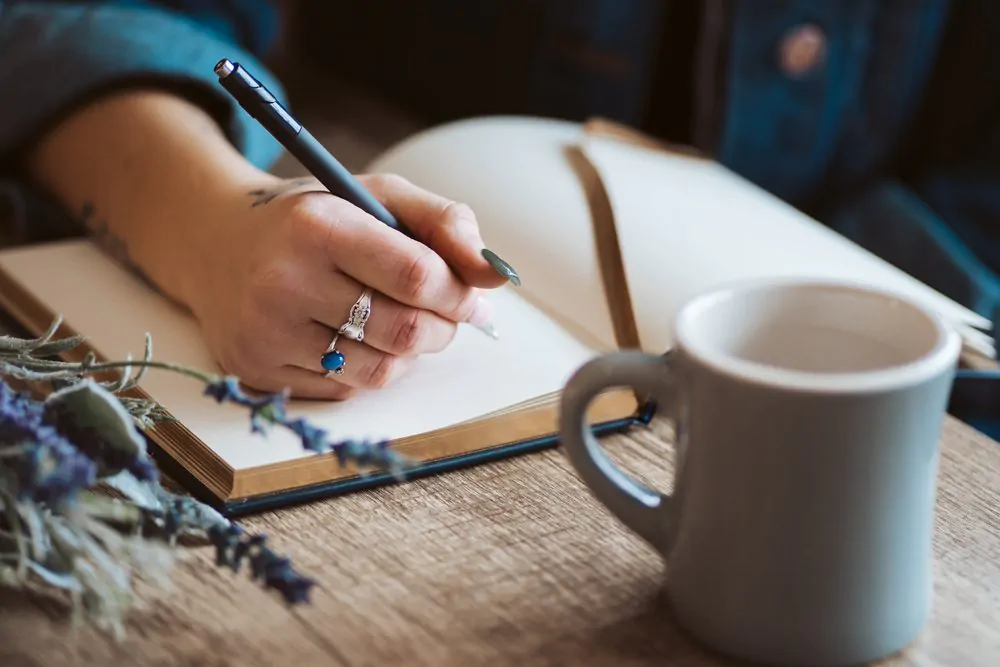Discover our guide with the best prompts for creative journaling and become a seasoned writer in no time!
All writers struggle from time to time with writer’s block or feeling stuck in a rut. When your creative spark doesn’t ignite, it can be frustrating; sometimes stream of consciousness journaling can help you break through this wall. Creative journaling is one of my favorite low-stress solutions when I’m feeling uninspired. It comes in all forms, can help you focus or brainstorm, and feels good. Let’s explore how it works.
Contents
- What is a Creative Journaling?
- 1. Traditional Written Journal
- 2. Freeform Journaling
- 3. A Poetry Journal
- 4. Mixed Scrapbook Journaling
- 5. Travel Journaling
- 6. Junk Journaling
- 7. A Journal with Prompts
- 8. Sketch or Art Journaling
- 9. Mind Mapping
- 10. Bullet Journaling
- 11. Dream Journaling
- 12. Morning Journal
- 13. A Reading Journal
- 14. Food Journal
- 15. Draft Journal
- 16. Affirmation Journal
- FAQs on Creative Journaling
What is a Creative Journaling?

Creative journaling is a way of getting your thoughts onto the page – and not necessarily with the written word, either! It helps encourage imagination and creative thinking as you combine mediums or try new types of prose and poetry to express thoughts. The result is a more flexible approach to writing and often some great ideas for both nonfiction and fiction approaches in your work.
1. Traditional Written Journal
“What?” you might be thinking, “How is a traditional journal creative? I already know how those work.” The goal is to use a traditional journal to unlock new thoughts. Open up a notebook, and you are confronted with very normal lines to write on. But, with creative journaling, you can find new ways to express thoughts by just getting the words out and seeing what happens. This is a great way to stumble across writing techniques and approaches you would have never thought of before, especially for forms like fiction or creative nonfiction.
2. Freeform Journaling
In freeform journaling, write freely without sticking to the traditional writing rules. Why not skip as many lines as you want between sentences, and write wherever you want on the page? Why not write one section in the first person and the next in the second person? Why not write an entire paragraph in nouns, and the next in verbs, while still trying to convey your meaning?
As you can see, this kind of daily journal is a great way to play around with grammar and explore writing styles you don’t often use. It doesn’t always have to make sense, and it doesn’t have to be printable. The goal is to let creativity take over and write whatever comes to mind.
3. A Poetry Journal
Even if you don’t usually try poetry, a poetry journal can be one of the powerful creative journaling ideas that jumpstart your writing. Noting down poems and playing with writing techniques such as metaphor, rhyme, and simile can inspire creative thinking and generate new ideas for your writing.
4. Mixed Scrapbook Journaling

Also called a mixed media journal, this DIY journaling style allows you to be creative. While a traditional scrapbook focuses on pasting in complementary photos, shapes, and artwork, a mixed media version is much more freeform. You can write, draw, or paste in shapes and photos as you desire. Break out the crayons and color up a page! Write a paragraph, then doodle your thoughts about that paragraph around it.
Look for ways to combine thoughts with colors and images that you identify with those thoughts, then find suitable materials for the job. Maybe even grab a pack of stickers to use. Later on, when you are writing more traditionally, consider how references to colors or imagery could help strengthen your writing.
5. Travel Journaling
Travel journaling can be considered a form of diary writing; it is about recording the new places you visit, the new people you meet, and the new experiences you have. You don’t have to write in any particular form; remember to be descriptive and record what happened so you can remember it clearly. This will improve your descriptive writing and help you reference your experiences for later inspiration.
6. Junk Journaling
Junk journaling is travel-related scrapbooking where you paste actual mementos of your experiences. It’s focused on things that you would otherwise throw away after use. That could include train tickets, subway passports from a different city, wrappers from the food you ate on an airplane, pieces of a map you used, etc.
It’s a way to improve your memory and create a special journal to share with others. This type of journaling doesn’t require travel, either. Junk journaling can record actual receipts you collected or candy wrappers from a particular snack you had.
7. A Journal with Prompts
Create a daily journal with writing prompts for each session to give you a starting place. There are many journals prompts like this, with many different themes, so you can customize the prompts for what you had in mind. Here’s an affordable option on Amazon for generic prompts to give you an idea. Writing prompts are helpful because they give you a starting place, and you don’t have to develop a subject independently.
8. Sketch or Art Journaling
This type of journaling uses black sketchbooks and lets you choose what to put on the canvas. That opens a lot of doors for creative sketching and drawing. Again, even if you aren’t that type of artist, you can still find a lot of value in this journaling method. Sketching (no matter how good or bad you are) can unveil hidden possibilities in the world around you.
No matter how absently, drawing can help you focus your thoughts and create new realizations. Journaling has been found to offer many multiple benefits for creatives. If you are an artist, check out our article on art journaling for the complete lowdown. If not, have fun with lettering and doodles as you go.
9. Mind Mapping

Mind mapping is a digital option that’s closely related to brainstorming. Here, you can use an app to create and connect thought bubbles in various ways. The first benefit is that you don’t need to write or type that much to start mind mapping: Grab a good app, like the popular Xmind.
The second benefit is that you can start listing random thoughts or ideas that you’re having, in no particular order, then connect and categorize them later. It’s a good option for people who like to start with many different thoughts and find ways to link them together.
10. Bullet Journaling
Bullet journaling means using bullet points when you journal. It’s a popular recommendation for people working on to-do lists and checklists they want to tackle. But bullet points can be used creatively by listing thoughts and feelings or creating lists of story ideas – you can write random ideas, even if they’re only a word or two.
The draw behind creative bullet journaling is that not every bullet has to be useful or meaningful. It can be easy to get words out of your head and onto a list so you can judge which are helpful later on. This may also be a handy precursor to creating an outline.
11. Dream Journaling
The rules for this journal are simple: Jot down everything you remember from your dreams. Any fragments qualify; it doesn’t matter how much sense they make. It’s usually best to do this early in the morning before you forget your dreams. Sometimes you can find the seed of a good idea from your dreams when you look at them later. Or you may discover a different option to describe something or a scenario that will work perfectly for your characters. It’s a little like reaching your hand into a grab bag.
12. Morning Journal
A morning journal is an alternative or type of journaling you can combine with a dream journal. When you write in a morning journal, you jot down your stream-of-consciousness thoughts. They could be random worries about the day, hopeful plans, what you want for breakfast, how much you wish you could go back to sleep…just whatever you are thinking and feeling.
A morning journal like this can help you uncover new ideas, and it’s a common suggestion for all kinds of artists. It’s also a great substitute if you don’t remember any dreams from the night before but still need to journal.
13. A Reading Journal
As the name suggests, a reading journal is where you take notes on the novels you are currently reading. You can use these journals to keep track of more complex novels and make important notes to keep everything straight. That’s especially useful if you don’t have much time to read.
You can also use a reading journal to critique the novels you read. By critiquing another work, you often discover ways to improve your writing and new techniques you can use. Or, if you don’t want to get so technical, you can describe your feelings and thoughts while reading. Studying your reactions as a reader is also a great way to improve as a writer.
14. Food Journal
For this kind of creative journal, focus on describing a meal you had or the food you are eating. Use multiple senses beyond taste, and find the right words to describe what you like or dislike. Eating can be a very intense experience, and practicing it can help you improve the way you communicate sensory information. Plus, you may find you like being a food blogger!
15. Draft Journal
This is a more significant journal for drafts of your writing work. Use it to create chapter openings, start writing critical essays, and experiment with upcoming player dialogue. Many writers prefer making drafts this way because there is less pressure to get it “just right.” Also, putting pen to paper may help open up more creativity than putting hands to keyboard for some journalers. Also, you don’t have to tote around a laptop to work on your drafts, so it’s a bit more flexible. Just getting a challenging section started can be a big help.
16. Affirmation Journal

An affirmation journal is designed for positive thoughts – which can be immensely helpful for many writers who feel depressed or unfortunate. Use it to record when you’ve reached goals and empowering statements like, “I like writing a lot,” and “I completed an entire draft this month.” This can help create positive feedback in your mind that’s very healthy, emotionally, and as a creator.
FAQs on Creative Journaling
What are some examples of creative journaling?
Inspiration for creative journaling can come from many places and creative people, so you don’t need to stop at this list. For example, you may want to look at the University of British Columbia’s guide and how students there have found success in creative journaling.
Can creative journaling help me organize?
Keep in mind some types of creative journaling can be intensely practical. Some creative journaling types focus on fitness, budgeting, or recipes. These aren’t always as inspiring for writing, but they help you get organized. The popularity of gratitude journaling has skyrocketed in recent years and is known to improve your well-being.
What are some creative exercises I can do in my journal?
1. Confine yourself to a single line. That’s all you get to express an idea: How will you do it?
2. Or, you could give yourself a brief time limit: Write everything you want in 5 seconds. Then reflect on what and why you wrote.
Looking for inspiration? Check out our best quotes about journaling!